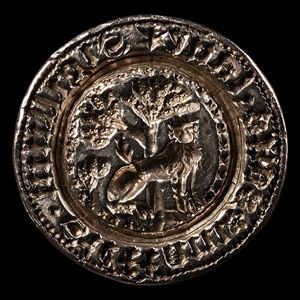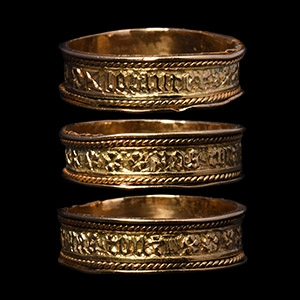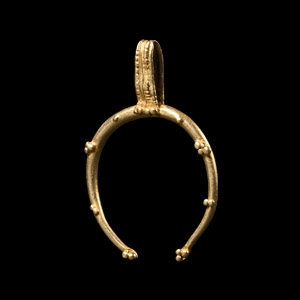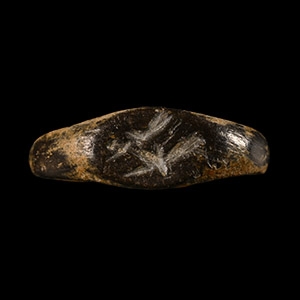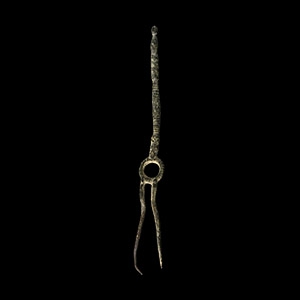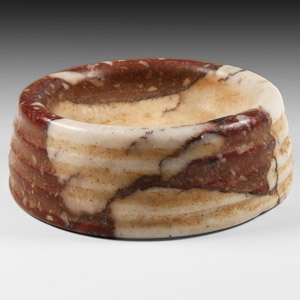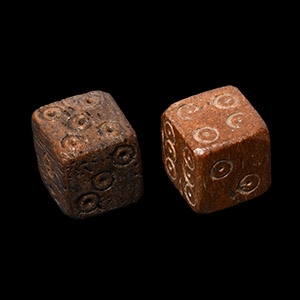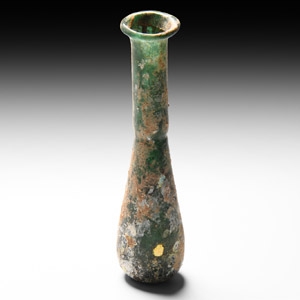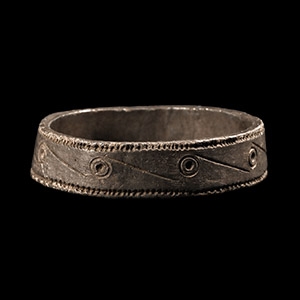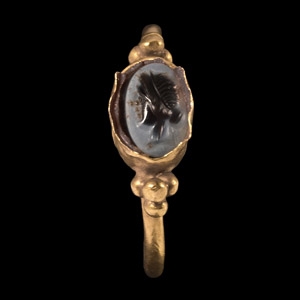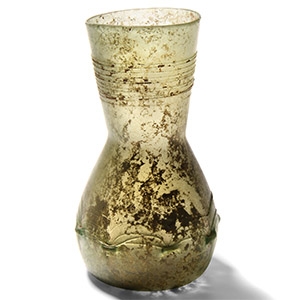Home > Auctions > 21 - 25 February 2023
Ancient Art, Antiquities, Natural History & Coins
Auction Highlights:
Acquired before 2000.
From the collection of a European gentleman living in the UK.
Acquired before 2000.
From the collection of a European gentleman living in the UK.
Cf. similar style plaque in the British Museum, an embossed plaque of Athena, inventory number 2003.0901.23.
Aesculapius, god of medicine, the Greek Asclepius, son of Apollo and a mortal, Coronis, is often accompanied by a snake, a symbol of wisdom and healing power. Aesculapius-Asclepius is also often represented with the staff having a snake wrapped around it.
Acquired in the 1970s.
Important European collection.
Cf. Henkel, F., Die Römischen Fingerringe der Rheinlande und der Benachbarten Gebiete, Berlin, 1913, items 61-62, for type.
The libidinous hare was sacred to Aphrodite and Eros (Venus and Cupid), and live hares were often presented as love gifts.
Acquired before 2000.
From the collection of a European gentleman living in the UK.
The ring could have belonged to a praetorian guardsman. The scorpion was one of the main symbols of the praetorian guard since the age of Augustus.
Acquired early 2000s.
Property of a Birmingham, UK, collector.
Property of an Essex, UK, gentleman.
French collection, 1960s-early 2000s.
From an important Paris gallery, France.
English collection formed in the 1990s.
UK art market.
Property of an Essex gentleman.
Acquired 1960s-1990s.
From the late Alison Barker collection, a retired London barrister.
See Mordtmann, A., 'Das Denkmal des Porphyrius', in Mittheilungen des deutschen archäologischen Institutes, in Athen, vol. V, Athens, 1880, pp.295-308, for a detailed representation of the costume of the Auriga and the position of the victorious chariot driver; Vasiliev, A.A., 'The monument of Porphyrius in the hippodrome at Constantinople' in Dumbarton Oaks Papers Vol. 4, (1948), pp.27-49; for the style of pottery cf. Banck, A., Byzantine Art in the collections of the USSR, Leningrad-Moscow, 1966, fig.23, for a very similar pottery style.
The pottery fragment shows an image of a charioteer in the moment of victory, with his left hand carrying a palm branch. The iconography is visible in the monument of Porphyrios in Constantinople and the charioteers of the Baccano mosaics. The detailed representation of the Auriga shows the attributes of his work: he wears a close-fitting undershirt with sleeves (γυμναστικiον) and an ornamented sleeveless tunic over it, leaving the knees exposed as is typical for charioteers (αυριγαριον).
Acquired 1980-2015.
Ex Abelita family collection.
Acquired before 2000.
From the collection of a European gentleman living in the UK.
UK private collection, since 1956.
Formed in the 1950s by by Mr and Mrs S. Broukal, thence by decent.
with Bonham's, London, New Bond Street, 30 November 2016, lot 155 [Part].
English private collection.
Cf. Ruseva-Slokoska, L., Roman Jewellery, Sofia, 1991, item 219 (ring).
French collection, 1960s-early 2000s.
From an important Paris gallery, France.
481 - 492 of 2116 LOTS


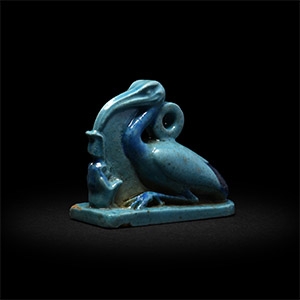



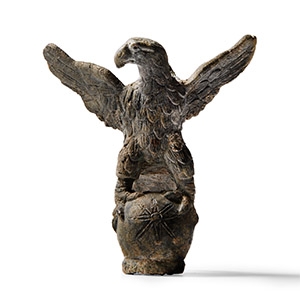
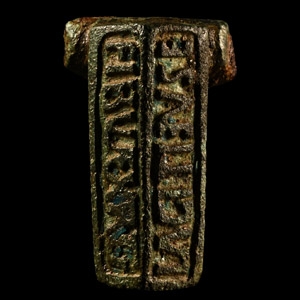

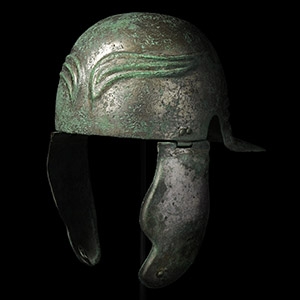
.jpg)
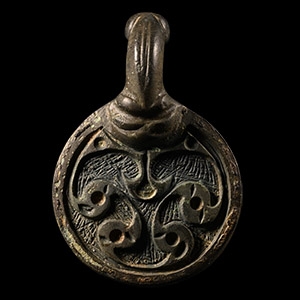
.jpg)
